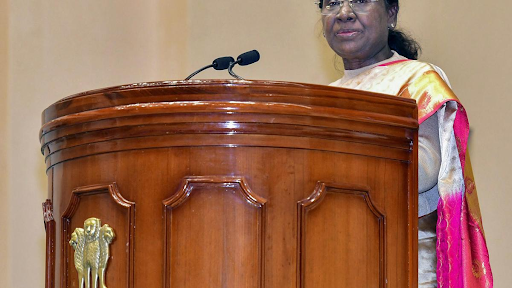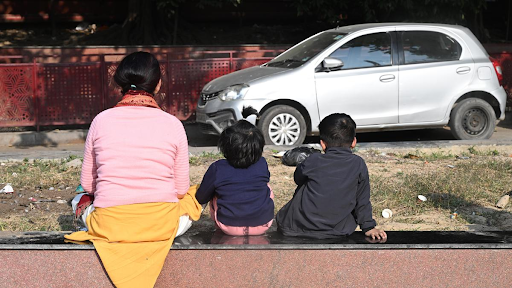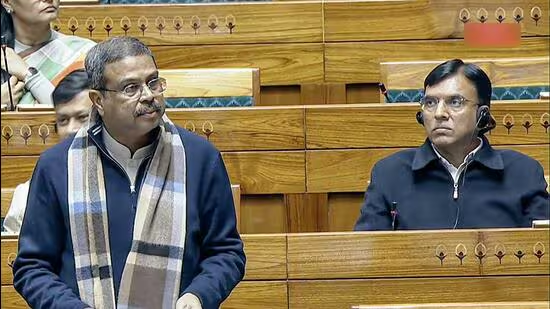



India needs gender-inclusive courts to promote equality, create an inclusive environment, and ensure fair, empathetic, and balanced judicial decisions. This is vital to address the under-representation of women in the higher judiciary and dismantle existing systemic barriers.

Copyright infringement not intended
Picture Courtesy: THE HINDU
Context
Building gender-inclusive courts is essential to address the persistent gender imbalance in the higher judiciary and promote equality and inclusivity.
|
Read all about: GENDER JUSTICE AND JUDICIAL APPOINTMENTS IN INDIA l WOMEN IN JUDICIARY |
What is Gender-Inclusive Court?
A gender-inclusive court is one that moves beyond mere numerical representation. It signifies a fundamental shift towards a judiciary that:
Supreme Court (as of September 2025)
Out of 34 sanctioned posts, Justice B.V. Nagarathna is the only woman judge.
Since 1950, only 11 women judges (3.8% of 287 total judges) have served in the Supreme Court. (Source: The Hindu)
Justice Nagarathna is set to be India’s first woman Chief Justice of India (CJI) in 2027, but her tenure will be limited to 36 days due to her late elevation.
High Courts (as of September 2025)
The India Justice Report 2025 indicates that women comprise only 14% of judges across all High Courts.
Several High Courts, including Uttarakhand, Meghalaya, Tripura, and Manipur, have no women judges. The Allahabad High Court, India's largest, has only 3 women judges out of 79 (2%). (Source: The Hindu)
Only one of 25 High Courts is currently led by a woman Chief Justice. (Source: The Hindu)
District Courts (Lower Judiciary)
The lower judiciary shows better representation, with women making up 38.3% of district court judges, a substantial increase from 30% in 2017 (India Justice Report 2025).
States like Goa (70%), Meghalaya (62.7%), and Telangana (52.8%) demonstrate high female representation, largely due to competitive examination-based selections.
Enhanced Jurisprudence and Diverse Insights
Women judges offer unique insights, particularly in cases of gender justice, workplace equality, and sexual violence. Examples like Justice Gyan Sudha Misra's work on workplace sexual harassment (Vishakha judgment, 1997) and Justice Indu Malhotra's dissent in the Sabarimala case (2018) highlight the importance of diverse judicial perspectives.
Increased Public Trust and Legitimacy
A diverse judiciary (Articles 14 & 15) increases public confidence. Female underrepresentation undermines the judiciary's claim to represent "We, the People."
Upholding Constitutional Morality
Articles 14 and 15 ensure equality and prohibit discrimination. A diverse judiciary upholds this by inclusively interpreting constitutional rights for all, especially marginalized communities.
Role-Model Effect and Talent Development
Women judges inspire young female legal professionals, breaking the "glass ceiling" in a male-dominated field and increasing the talent pool for higher judicial roles.
Alignment with Global Commitments
Greater representation of women in decision-making bodies aligns with Sustainable Development Goal 5 (Gender Equality) and international frameworks such as the Beijing Platform for Action (1995).
Deep-Rooted Patriarchy and "Old Boys' Club" Mentality
Within the legal field, women encounter barriers to networking, mentorship, and career advancement due to societal gender norms and the "old boys' club" culture. This informal network excludes women, who face increased scrutiny and bias during appointments.
Opaque Collegium System
The Collegium System, where the Chief Justice and senior judges appoint judges, faces criticism for its opaque criteria and lack of accountability, potentially sidelining qualified women. Since 2020, nine women recommended for High Court judgeships were reportedly rejected or not elevated.
Late Elevations and Shorter Tenures
Women judges are appointed to higher judiciary at an older age (53.1 years) than men (51.8 years), leading to shorter tenures, reduced leadership opportunities, and limited influence, as exemplified by Justice Nagarathna's brief upcoming term as Chief Justice.
Lack of Supportive Infrastructure
Many courts and legal workplaces lack gender-sensitive infrastructure. A 2023 Supreme Court report found that nearly 20% of district courts lacked separate women's toilets, and the absence of crèches hinder women's long-term careers.
Limited Pipeline ("Funnel Effect")
The pool of eligible women for elevation to higher judicial positions remains small. Only about 15% of India's 1.7 million registered advocates are women, and even fewer attain senior advocate status or prominent positions in Bar Councils. (Source: Live Law)
Resistance to Reforms (The NJAC Debate)
Suggestions for a more transparent, merit-based system, such as the All-India Judicial Service (AIJS), have faced strong resistance from segments of the judiciary and the Bar. These groups fear executive interference and a dilution of judicial autonomy.
The Supreme Court struck down the National Judicial Appointments Commission (NJAC) in the Fourth Judges Case (2015), arguing it compromised judicial independence and violated the "basic structure" doctrine.
Institutional Inertia
Unlike regional or caste diversity, gender is not a formal criterion for judicial appointments. This indicates a lack of proactive, institutionalized commitment to rectifying the imbalance.
Establish an All-India Judicial Service (AIJS):
Mandate Gender Diversity in the Collegium
To promote gender diversity, the Collegium should formally adopt gender as a selection criterion, striving for a minimum of one-third women in higher judiciary appointments.
Ensure Transparent Collegium Processes
Publish clear, objective appointment criteria, including the reasons for selecting and rejecting candidates, especially women, to enhance accountability and public trust.
Develop Gender-Sensitive Infrastructure and Policies
Implement flexible working hours, maternity benefits, crèches, and safe restrooms in court complexes to support women's career continuity in the judiciary.
Strengthen the Legal Pipeline
Implement mentorship and leadership development programs for women lawyers and judicial officers in the lower courts to create a robust pipeline of talent for higher elevations.
Collect and Publish Diversity Data
The Department of Justice should collect and publish social and gender diversity data for judicial appointments, as recommended by the Standing Committee on Personnel, Public Grievances, and Law and Justice (2023), to ensure accountability and track progress.
Adopting International Best Practices
The United Kingdom's Judicial Appointments Commission (JAC) serves as an excellent model. It is an independent body that manages the selection process based on merit, good character, and diversity.
The higher judiciary lacks gender diversity despite a commitment to equality. Success in lower judiciary and Civil Services suggests an All-India Judicial Service focused on gender could create a more competent, representative judiciary, boosting democracy and ensuring justice.
Source: THE HINDU
|
PRACTICE QUESTION Q. Gender representation in the judiciary is not merely a matter of equity, but a crucial component of institutional legitimacy and access to justice." Critically Analyze. 250 words |
The "leaking pipeline" describes the decline of women in the legal profession from lower to higher ranks. Many women enter the lower judiciary but leave mid-career due to family, lack of support, or hostile work environments, thus limiting their presence in higher judicial roles.
The "glass ceiling" in the Indian judiciary hinders women's advancement. While representation is strong in lower courts, it significantly drops in High Courts and the Supreme Court due to delayed appointments, societal pressures, and patriarchal attitudes.
A lack of diversity in the judiciary, particularly when women and marginalized communities are underrepresented, lead to a "legitimacy crisis" and diminish public trust. If the bench does not reflect society, people may question the justice system's impartiality.





© 2025 iasgyan. All right reserved